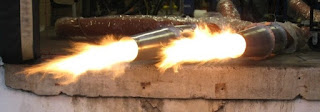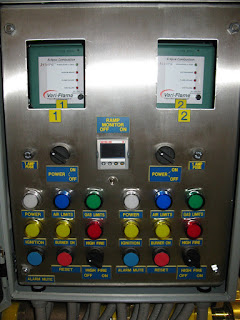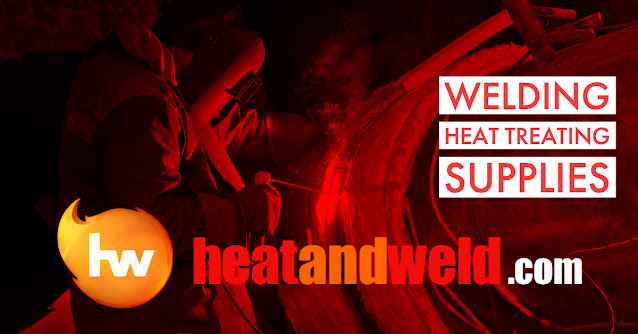A blog that provides educational information on electric heating systems used on hoppers, chutes, tanks and vessels; electric heating systems used for pre and post weld heat treating; heat treating power consoles; custom heat treating furnaces; and single & multi-operator welders. For more information, visit HotfoilEHS.com
Purchase All Your Pre and Post Welding Heat Treatment Supplies Online from HeatandWeld.com
Aftek EHS Transformers for Heat Treatment, Welding Machines and Power Consoles
Aftek EHS, a business group under Hotfoil-EHS, designs and manufactures electrical transformers used in heat treating, welding machines, power consoles, and other industrial applications. Aftek transformers regulate amperage and voltage and convert the AC source to a suitable current for welding and heating. Aftek also manufactures step-up transformers that convert 208, 3 phase to 480 volt 3 phase for machine operation in facilities without access to 480-volt power. All products are proudly manufactured in the USA.
For more information about Aftek transformers, contact Hotfoil-EHS. Call them at +1 609-588-0900 or visit their website at https://hotfoilehs.com/transformers.
Ice Star Heat Treatment Controllers
Hotfoil-EHS is the exclusive distributor for Ice Star in the United States, Canada, and Mexico.
https://hotfoilehs.com/icestar
609-588-0900
Hotfoil-EHS Heat Treating Power Consoles
Precise control over your pre-weld and post-weld heat treatment parameters are critical. Accurate temperature control, specific soak times, uniformity, and controlled heat up and cool down times are required to ensure strong welds. Hotfoil-EHS power consoles are designed to provide the best control, easiest user interface, and longest lasting operation, even in the toughest environments. Using only the highest quality components, Hotfoil-EHS power consoles are field-tested and application proven. Control systems can be specified with or without recorders or ramping controllers, and are standardly available in 6, 9, 12, 18, and 24 zone configurations.
https://hotfoilehs.com
609-588-0900
The ICE Advanced Heat Treatment Control System
https://hotfoilehs.com/icestar
609-588-0900
Custom Heat Treatment Furnaces Designed for the Most Challenging Applications
From decades of experience in furnace production, many important furnace engineering discoveries were made that save time, money, and improve the end product.
Contact Hotfoil-EHS for your next heat treatment furnace requirement.
https://hotfoilehs.com
609-588-0900
Large, Custom Heat Treat Furnace Fabrication
Custom Mobile Heat Treating Trucks
Custom designs include a variety of generator sizes, power consoles, interior workspaces and layouts, air conditioning, and easy access to all electrical components. For more information, visit http://www.hotfoilehs.com or call 609-588-0900.
Basics of Heat Treating
 |
| Interior view of heat treating furnace. |
Heat treating includes stress-relief treating, normalizing, annealing, austenitizing, hardening, quenching, tempering, martempering, austempering, and cold treating. Annealing, as an example, involves heating a metallic material to, and holding it at, a suitable temperature, followed by furnace cooling at an appropriate rate. Steel castings may be annealed to facilitate cold working or machining, to improve mechanical or electrical properties, or to promote dimensional stability. Steel vessels, girders, pipes, and structures are heat treated prior to, and after welding to improve weld quality and strength.
 |
| Gas fired furnace used for heat treating. |
Heating systems are direct fired or indirect heated. With direct-fired furnace equipment, work being processed is directly exposed to the products of combustion, generally referred to as flue products. Gas- and oil-fired furnaces are the most common types of heat treating equipment. Indirect heating is performed in electrically heated furnaces and radiant-tube-heated furnaces with gas-fired tubes, oil-fired tubes, or electrically heated tubes.
Pyrometers: Non-contact Temperature Measurement
 |
| Pyrometers come in handy for applications such as heat treating. |
Pyrometers can commonly concentrate light from an object onto a temperature sensing element. The sensed elevation in temperature is proportional to the infrared optical energy. Different instruments may have varying arrangements of concentrating lenses and sensors, but the operating principle is the same. The physical law behind the pyrometer's operating principle operates on an exponential mathematical basis that is non-linear. This results in one of the limitations of the pyrometer. A single pyrometer can only, with high accuracy, deliver a comparatively narrow range of target temperature. If the need for accuracy is reduced, the applicable temperature range widens. Innovative manufacturers have developed instruments with technology and features overcoming many of the limitations imposed by the physics, delivering instruments with accuracy and applicable temperature range usable in a wide array of applications.
One of the advantages to using a non-contact pyrometer is that their calibration is independent of the distance between the sensor and the object being evaluated. This phenomenon is due to the fact pyrometers have a field of view and can be filled with the target object in a way independent of distance. While the radiation emanating from the target object may be decreasing, the field of view of the pyrometer is measuring a greater portion of the object which is proportional to the amount of radiation being lost, essentially canceling out the distance and allowing the pyrometer to provide useful output. An example of a practical application of a pyrometer in industry would be its use to check the temperature of a ventilation system in the HVAC field.
Share your temperature measurement requirements and challenges with process instrumentation specialists. Their product application expertise will combine with your own process knowledge and experience to produce an effective solution.
Fuel Based Furnace Types and Applications
 |
| Large furnace in production (Hotfoil-EHS) |
Fuel-based process heating systems are common in nearly every industry segment, and include furnaces like ovens, heaters, kilns, and melters, but also the surface treatment in ambient air. Typical fuel-based furnaces include the following:
- Atmosphere generators. Used to prepare and/or condition protective atmospheres. Processes include the manufacture of endothermic gas used primarily to protect steel and iron during processing, and exothermic gas used to protect metals, but also to purge oxygen or volatile gases from con ned areas.
- Blast furnaces. Furnaces that burn solid fuel with a blast of air, often used to smelt ore.
- Crucible furnaces. A furnace in which the heated materials are held in a refractory vessel for processes such as melting or calcining.
- Dryer. A device that removes free water, or other volatile components, from materials through direct or indirect heating. Dryers can be grouped into several categories based on factors such as continuous versus batch operation, type of material handling system, or source of heat generation.
- Indirect process heaters. Used to indirectly heat a variety of materials by remotely heating and circulating a heat transfer uid.
- Kilns. A furnace used to bake, dry, and re ceramic ware or wood. Kilns are also used for
calcining ores.
Heat treating furnace (Hotfoil-EHS) - Lehrs. An enclosed oven or furnace used for annealing, or other forms of heat treatment, particularly in glass manufacturing. Lehrs may be the open type (in which the flame comes in contact with the ware), or the muffle type.
- Muffle furnaces. A furnace in which heat is applied to the outside of a refractory chamber or another enclosure containing the heated material that is enveloped by the hot gases. The heat must reach the charge by flowing through the walls of the container.
- Ovens. A furnace-like chamber in which substances are heated for purposes, such as baking, annealing, curing, and drying. Heated systems can use forced convection or infrared.
- Radiant-tube heat-treating furnaces. Used for processing iron, steel, and aluminum under a controlled atmosphere. The flame is contained within tubes that radiate heat to the work. Processes include carburizing, hardening, carbo-nitriding, and austempering. The atmosphere may be inert, reducing, or oxidizing.
- Reverberatory furnaces. Furnaces in which open flames heat the upper portion of a chamber (crown). Heat is transferred to the material mainly by radiation ( flame, reflection of the flame by the crown) and convection (combustion gases).
- Salt bath furnaces. Metal pot furnaces filled with molten salt where heat is applied to the outside of the pot or inside of the pot by radiant tube. Salt bath furnaces are used for processes such as heat treating metals and curing plastics and rubber.
- Solid waste incinerators. Used to dispose of solid waste material through burning.
- Thermal oxidizers. Used to oxidize volatile organic compounds (VOC) in various industrial waste streams. Processes include paint and polymer curing and/or drying.
Process Heating: Induction
 |
| Induction heating coils around large pipe in preparation of welding. |
 |
| Induction heating power console (Hotfoil-EHS) |
The efficiency of an induction heating system for a specific application depends on several factors: the characteristics of the part itself, the design of the induction coil, the capacity of the power supply, and the degree of temperature change required for the application.
With conductive materials, about 80% of the heating effect occurs on the surface or “skin” of the part. The heating intensity diminishes as the distance from the surface increases, so small or thin parts generally heat more quickly than large thick parts, especially if the larger parts need to be heated all the way through.
Induction heating can also be used to heat liquids in vessels and pipelines, primarily in the petrochemical industry. Induction heating involves no contact between the material being heating and the heat source, which is important for some operations. This lack of contact facilitates automation of the manufacturing processes. Other examples include heat treating, curing of coatings, and drying.
Induction heating often is used where repetitive operations are performed. Once an induction system is calibrated for a part, work pieces can be loaded and unloaded automatically. Induction systems are often used in applications where only a small selected part of a work piece needs to be heated. Because induction systems are clean and release no emissions, sometimes a part can be hardened on an assembly line without having to go to a remote heat treating operation.
Welding Heat Treatment Power Consoles
 |
| Welding Heat Treatment Power Consoles by Hotfoil-EHS |
Power consoles are standardly offered in 6, 9, 12, 18, and 24 zone configurations with a variety of control and recording systems. All Hotfoil-EHS power consoles are available in Stainless Steel and can be customize to your requirements.
Temperature recorders are available for applications requiring documentation and certification. Fully automatic controllers are provided when specific heat-up and cool-down profiles are needed.
EHS manufactures and sells accessories including:
- ceramic heaters,
- thermocouple attachment units (TAU)
- pin welders
- hardness testers
- thermocouple wire
- insulation
Ceramic Pad/Mat Heaters: The Tried and True Way to Heat Treat
 |
| Ceramic mat heater: Proven performance over time. |
Ceramic pad heaters (also known as mat heaters) are constructed of interlocking sintered alumina ceramic beads (usually pink or white in color) which insulate an 80/20 Nickel/Chrome multi-strand wire (the resistance element).
Ceramic pad heaters are designed for most pre-heat and post-heat treatment requirements on weld joined materials (stress relieving). Available in numerous sizes, shapes, configurations, voltages and wattages, they can be used up to 2150°F in various weld heat treating applications.
 |
| Various shapes and sizes. |
process as well as more efficiently retain the heat for soaking.
For more information on the use and installation of ceramic pad (mat) heaters, visit Hotfoil-EHS at www.hotfoilehs.com or call 609.588.0900.
All Stainless Heat Treat Power Consoles
 |
| Hotfoil-EHS Stainless Steel Power Consoles |
With decades of experience in challenging applications, and thousands of successful installations, Hotfoil-EHS maintains their well deserved reputation as the highest quality and most competitively priced manufacturer of heat treat power consoles in the world.
Fusion45: New Rugged Induction Heater Improves Weld Quality
 |
| New Welding Induction Heater |
Induction heating works very quickly, and since there is no contact with the target piece, there are far less concerns about part contamination. Many industrial processes use induction heating when very high temperatures and uniform control is desired.
Pre and post-weld heat treating (stress relieving) is a growing market for induction heating systems because it offers significant benefits such as excellent heat placement and distribution, lower cycle times, safety, ease of use, and efficiency.
Induction heating can improve your bottom line by decreasing weld failures, and decreasing setup and tear down times. The technology allows for accurate temp control, without heavy electrical service or complicated controls. The portability and ease of use will allow you to heat more welds faster.
Industrial Heat Treating: Gas Train Basics
 |
| Industrial Heat Treating Burners |
The combustion provides the thermal energy to heat the workpieces in an oven or furnace to the desired temperature. The gas train can be broken down into several major components. The major parts of a gas train are:
Blower:
 |
| Industrial Heat Treating Gas Train |
Regulator
Regulates the total volume of fuel available to the burner and available to mix with the combustion air.
Control System
 |
| Gas Train Control System |
Ignition System and Transformer
Provides the required voltage to create an arc sufficient to light the burner. The ignition system is used to ignite the fuel / air mix - once the ignition takes place, the ignition system is no longer active. Electrical system includes circuit breakers for high and low voltage, starter contactors with over-load, and 750vA transformers for low voltage side.
High Velocity Nozzle Burners
Where the mix of fuel and air combusts and expels a high velocity / high BTU flame as the thermal energy source. Common sizes for burners are 6-10 million BTU, 3-6 million BTU, and 1 million BTU. Features commonly included are separate air and gas connections, UV hook-up, spark ignitors, ample lengths of air and gas hoses.
Watch the video below for a great visual on how a gas train works!
For more information, contact Hotfol-EHS at www.hotfoilehs.com or call 609.588.0900.
New Hotfoil-EHS Catalog Available for Download
 Electric Heating Systems, Inc. (EHS), established in 1994 in Robbinsville, NJ, is a designer and supplier of turnkey, permanent low temperature heating systems for the electric power and tank fabricating industries. Later, this division's name was changed to Hotfoil, and the EHS division began manufacturing ceramic mat (pad) heaters, power consoles, and accessories for the heat treating industry.
Electric Heating Systems, Inc. (EHS), established in 1994 in Robbinsville, NJ, is a designer and supplier of turnkey, permanent low temperature heating systems for the electric power and tank fabricating industries. Later, this division's name was changed to Hotfoil, and the EHS division began manufacturing ceramic mat (pad) heaters, power consoles, and accessories for the heat treating industry. Hotfoil-EHS is now a major manufacturer and producer of standard and custom designed industrial heat treating products with an exhaustive inventory including custom control panels, heat treating power consoles, cables and splitters, temperature recorders, thermocouple attachment units and pin guns.

